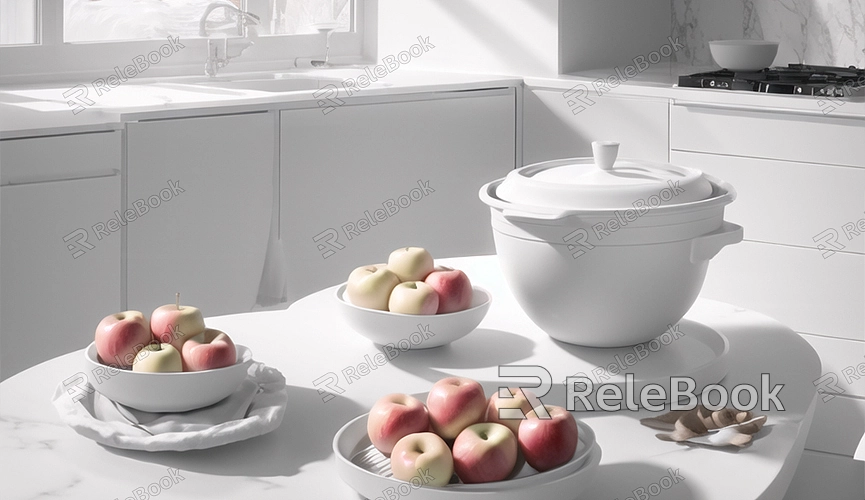How Long Does It Take to Make a 3D Model in Blender?
Blender is a powerful open-source 3D modeling and rendering software beloved by artists and designers. The time required to create a 3D model in Blender varies depending on the complexity of the project, the skill level of the designer, and specific detail requirements. This article will explore the time needed to make a Blender 3D model and provide some efficiency-enhancing suggestions.
Factors Affecting Time
1. Model Complexity
The complexity of the model is one of the primary factors determining the production time. Simple geometric models, such as cubes or spheres, may take only a few minutes. However, complex character models, buildings, or mechanical devices may take hours, days, or even longer to complete.
2. Designer's Skill Level
The skill level of the designer also significantly influences the production time. Experienced designers familiar with Blender's various tools and shortcuts can efficiently complete modeling tasks. Novice designers may require more time to learn and adapt to the software.

3. Detail and Precision Requirements
If the model requires high precision and numerous details, the production time will increase accordingly. For example, a highly detailed character model requires sculpting details, adding textures, and adjusting materials, all of which take considerable time.
4. Reference Materials and Planning
Sufficient reference materials and good planning can significantly improve modeling efficiency. Designers who prepare detailed reference images and design sketches before starting modeling can avoid frequent adjustments and modifications during the process, saving time.
Basic Modeling Steps
1. Analysis and Concept Design
Before starting modeling, designers need to clarify the model's requirements and purpose and perform concept design. This step typically involves sketching and collecting reference materials. For complex models, this step may take hours or even longer.
2. Basic Modeling
Basic modeling involves creating the model's fundamental shapes. For simple models, this step may only take a few minutes, while complex models may take several hours. Designers can use Blender's basic geometric primitives (such as cubes, spheres, cylinders, etc.) as starting points and gradually refine the model shape through extrusion, scaling, rotation, etc.
3. Detail Sculpting
Detail sculpting is the process of adding fine details to the model. Using Blender's sculpting tools, designers can add intricate textures and relief effects to the model. The time for detail sculpting depends on the model's complexity and detail requirements, ranging from several hours to several days.
4. Materials and Textures
Adding materials and textures to the model can make it more realistic. Designers need to create and apply appropriate materials to the model and use texture maps to add details. This step typically takes several hours, depending on the complexity of the materials and the finesse of the textures.
5. Lighting and Rendering
The final step is setting up lighting and rendering the model. Blender provides powerful lighting and rendering tools, allowing designers to achieve the desired effects by adjusting light sources and rendering settings. Rendering time depends on the model's complexity, materials, and lighting settings, ranging from minutes to hours.
Efficiency Enhancement Suggestions
1. Learn Shortcuts
Mastering Blender's shortcuts can significantly improve modeling efficiency. Common shortcuts include G (move), S (scale), R (rotate), etc. By using shortcuts, designers can quickly perform common operations, saving time.
2. Use Templates and Plugins
The Blender community offers a wealth of templates and plugins to help designers quickly create common models and effects. For example, templates can avoid modeling from scratch, while plugins can extend Blender's functionality, improving workflow efficiency.
3. Step-by-Step Approach
Break down complex models into multiple simple parts, gradually completing each part of the modeling process, and then assembling them together. This approach can make the modeling process more orderly and avoid dealing with too many complex details at once.
4. Continuous Learning
Blender's features are constantly updated and expanded, requiring designers to continuously learn and master new tools and techniques. By watching tutorials, attending training sessions, and participating in community discussions, designers can continually improve their skills and shorten modeling time.
The time required to create a 3D model in Blender depends on various factors, including the model's complexity, the designer's skill level, and detail and precision requirements. Through good planning, learning shortcuts, using templates and plugins, and continuous learning, designers can improve modeling efficiency and shorten production time. If you need high-quality 3D textures, HDRI, or 3D model downloads for your modeling and virtual scene creation, you can obtain them from Relebook, where you can directly import textures and 3D models into your project after downloading.

